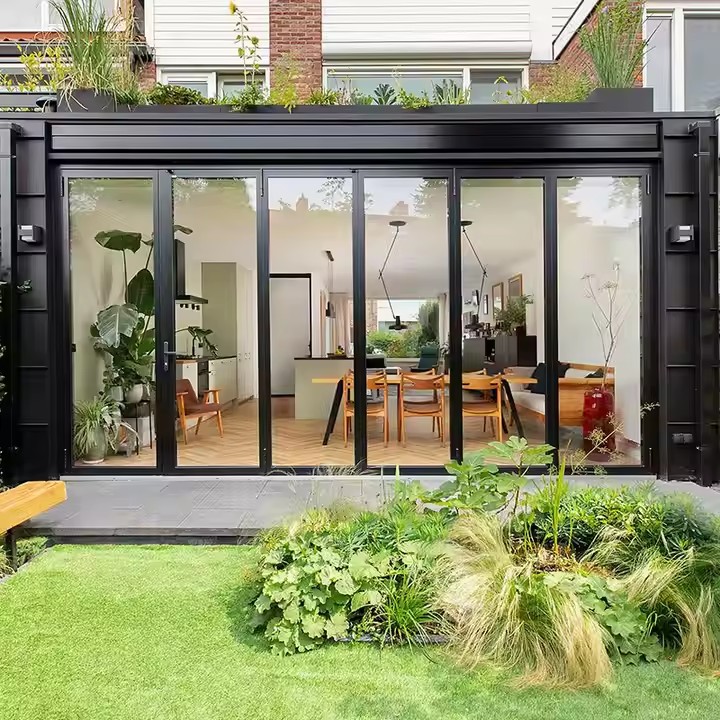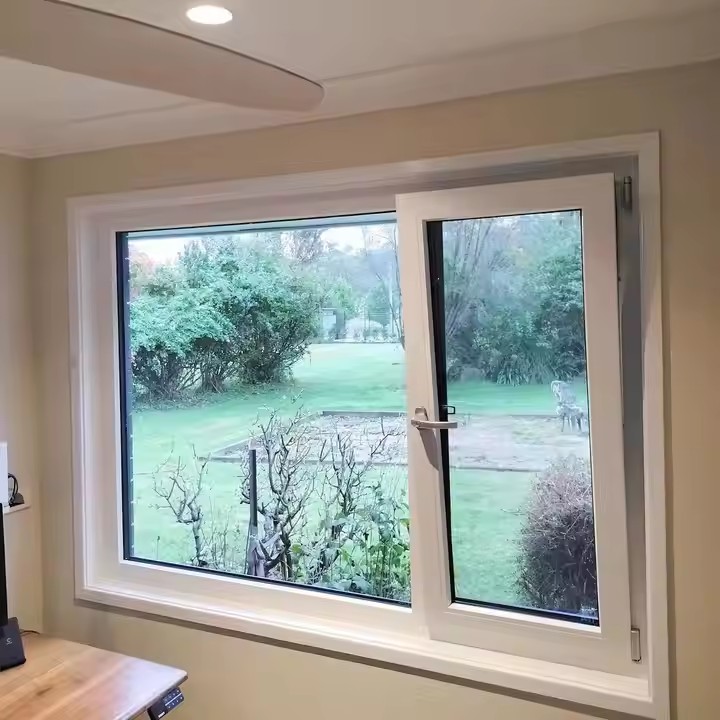1、Optimize structural design to enhance openness and transparency
Australians value the seamless connection between indoor and outdoor spaces, so the structure of folding doors should minimize visual barriers. The key is to adopt an ultra-slim frame design — using high-strength aluminum alloy to create frames as narrow as 8–15 mm, combined with concealed hinges and hidden screws to reduce visual fragmentation. A three- or four-panel configuration is preferred, which allows 70–80% of the doorway to open when fully folded.
Corner-folding doors are an innovative option — opening from the corner of a room creates a panoramic view, ideal for spaces facing gardens or swimming pools. It is also recommended to use top-hung or maglev trackless designs, or concealed bottom rails, to keep the floor visually clean and free of dust accumulation, aligning with the public preference for tidy, minimalist spaces.
2、Select materials and colors that reflect a natural and simple style
Material selection should balance natural texture with weather resistance. For frames, champagne anodized aluminum or wood-grain aluminum profiles are ideal — the former resists fading, while the latter offers a natural wood texture suitable for Australia’s sunny climate. Avoid pure black frames, which absorb heat and appear heavy.
Choose ultra-clear glass to reduce optical distortion or double-layer Low-E laminated tempered glass to maintain over 90% light transmission while blocking UV and infrared rays — achieving both lighting and energy efficiency.
Color-wise, use low-saturation natural tones that coordinate with wall and floor finishes: for example, champagne frames for off-white walls, or oak-pattern aluminum frames for light oak floors. Avoid bold colors like bright red or royal blue, which disrupt the light, airy feel of the space.

3、Refine functional details to suit local lifestyles
Functional design should balance practicality and aesthetics. For hardware, choose matte metal strip handles or handle-free designs, avoiding ornate or gilded styles to maintain a clean look.
Adapt functionality to different climate zones:
In tropical northern regions, install multi-layer EPDM sealing strips between frames and panels, and design wider drainage channels in bottom tracks to handle heavy rain.
In temperate southern regions, use PA66 nylon insulation bars within the frame to improve thermal performance.
Smart upgrades such as concealed silent motors, APP or gesture control, wind sensors, and anti-pinch protection can further enhance user convenience and integrate technology into minimalist design without compromising aesthetics.
Folding doors must also emphasize functional reliability — only when functionality meets high standards will customers value the design; otherwise, they will not consider it, no matter how stylish it appears.
4、Adapt to diverse architecture styles — balancing classic and modern
Australian architecture ranges from heritage to contemporary, and folding doors should adapt accordingly.
For Federation-style heritage buildings (such as in parts of Sydney), use solid timber like mahogany or oak with fine decorative lines or minimal carvings, in dark brown or charcoal tones, to match the dignified historic character.
In modern urban buildings (e.g., Melbourne apartments), choose stainless steel or titanium alloy paired with ultra-clear glass for a minimalist, high-tech feel. Accordion-style narrow panels work well as room dividers or storage area doors.
For coastal areas prone to cyclones, use materials and glass that meet hurricane resistance standards — combining structural strength with simple lines and light tones to balance safety and aesthetics.

5、Emphasize transitional details to enhance spatial harmony
Attention to detail strengthens overall visual coherence. Use flush indoor-outdoor flooring or matte light-gray thresholds under 5 cm to reduce tripping risk and suit Australians’ barefoot lifestyle, while ensuring a smooth spatial transition.
For privacy areas, opt for frosted or embossed glass, which provides soft lighting without the need for curtains that block light.
Use structural silicone sealing instead of visible rubber strips at frame joints, and embedded metal connectors for glass seams to achieve a seamless visual connection. This allows the folding door to blend with walls and floors as a unified whole — perfectly fitting the Australian preference for clean, integrated, and minimalist spaces.

